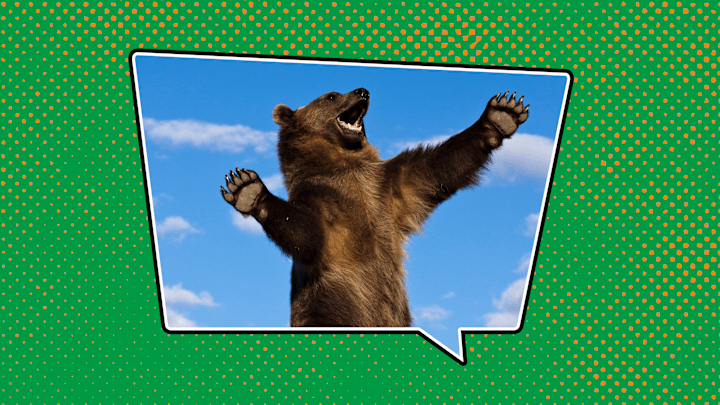The Irish language is full of evocative names for aspects of the natural environment, and wildlife is no exception. Let’s get acquainted with some of the most expressive Irish names for creatures of every size and habitat, from land and air to the depths of the sea.
1. Sciathán Leathair

A bat can be called an ialtóg, but why limit yourself when there are so many exciting alternatives? If you’re inclined to insult a bat, call it amadáinín (“little fool”). If you want to be melodramatic, go with bás dorcha (“dark death”). And if you prefer the descriptive route, there’s always sciathán leathair (“leather wing”).
2. Damhán Alla

Arachnophobes might want to skip this one! The most commonly used term for a spider in Irish is damhán alla (“wild ox calf”), which conjures mental images of a type of spider no one wants to encounter. This expression, which dates back more than a thousand years, raises questions for which there are no answers, so here’s a less common (but more logical) alternative: fíodóir (“weaver”).
3. Ollbhéar Meiriceánach

You might assume that typing “grizzly bear” into an online Irish dictionary would yield no results, given the absence of grizzlies in Ireland—but you would be wrong. The term is ollbhéar Meiriceánach: literally, “gigantic American bear.” No notes.
4. Snáthaid Mhór

What do insects and timepieces have in common? In English, nothing—but in Irish, the term snáthaid mhór (“big needle”) does double duty, referring both to a dragonfly and to the minute hand on a clock or watch.
5. Madra Crainn

Sure, you could refer to a squirrel as an iora. But that just means “squirrel,” and by this point, you have higher expectations—so feel free to call a squirrel a madra crainn (“tree dog”) instead. If nothing else, it might help explain cats’ obsession with monitoring squirrels’ every move.
6. Madra Uisce

Squirrels aren’t the only non-canine “dogs” in Irish. When asked to describe an otter by comparing its physical features to those of another animal, dogs might not be at the top of your list, but the Irish language is unequivocal on the matter. Whether you call it a madra uisce (“water dog”) or a dobharchú (“water hound”), an otter is an aquatic canine, and that’s that.
7. Aingeal Mara

Even when English makes an effort to use some flowery language for a particularly striking animal, it’s a safe bet that Irish has something more evocative up its sleeve. Case in point: the butterflyfish, known to Irish speakers as aingeal mara (“sea angel”).
8. Cat Mara

English looks at a certain type of fish with whisker-like protrusions and calls it a catfish; Irish observes the same creature and calls it cat mara (“sea cat”). Fair enough. As it happens, though, both terms have secondary meanings with negative connotations. The term cat mara can also refer to a calamitous or catastrophic circumstance—a meaning that long predates the internet phenomenon of catfishing. If it’s unclear why a “sea cat” is a catastrophe, Dinneen’s 1904 dictionary suggests a possible reason: a conflation of this term with the (much sadder) expression cat marbh (“dead cat”) [PDF].
9. Smugairle Róin

Have you ever looked—really looked—at a jellyfish? How would you describe the texture: viscous? Gelatinous? Gooey? Reminiscent of a marine mammal’s secretions? The most common Irish term for jellyfish is smugairle róin (“seal spittle” or “seal snot”), but if you want to go all in on the gross-out factor, sceith róin (“seal vomit”) is also an option.
10. Máthair Shúigh Mhór

Finally, let’s talk about squid. While the English word has been borrowed into Irish (as scuid), it’s no surprise the language already had its own term for the animal. Squid are known for catching prey with their suckers, and Irish honors that notoriety with the term máthair shúigh. That’s máthair (“mother”) followed by a form of the verb súigh (“suck”): “suck-mother,” if you will. And what about a giant squid? Logically enough, that’s a máthair shúigh mhór—a “big suck-mother.”
Read More Articles About the Irish Language:
